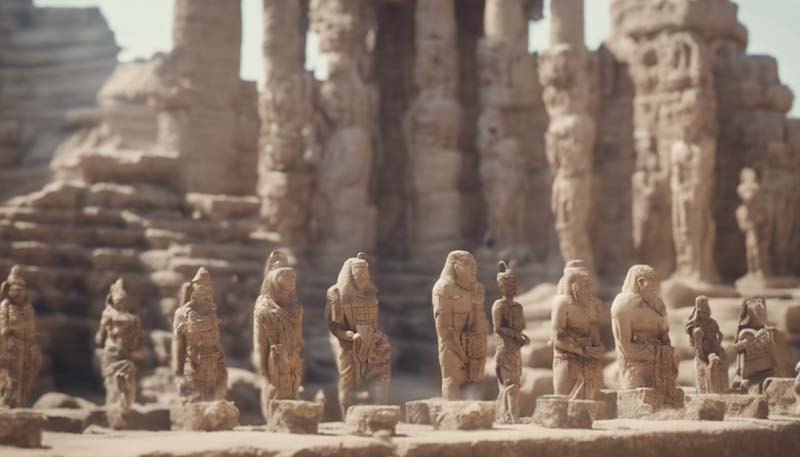The Evolution of Ancient Civilizations: A Comparative Study
Understanding the evolution of ancient civilizations is crucial for appreciating the roots of modern society. This article offers a comparative study of major ancient civilizations, focusing on their development, achievements, and the factors that led to their rise and fall.
Introduction
The dawn of civilization is marked by the emergence of complex societies with organized political structures, economic systems, and cultural practices. In this study, we will examine four significant ancient civilizations: the Sumerians, the Ancient Egyptians, the Indus Valley Civilization, and the Maya.
Advertisement
Sumerian Civilization
Development
Sumer, located in Mesopotamia (modern-day Iraq), is considered the cradle of civilization. Its development began around 4500 BCE with the establishment of city-states such as Uruk and Ur.
Achievements
The Sumerians were pioneers in many fields. They developed the first known form of writing, cuneiform, and made significant advancements in mathematics, astronomy, and agriculture.
Factors for Rise and Fall
The rise of Sumer was facilitated by its fertile land and the development of irrigation systems. However, the civilization eventually succumbed to internal strife and external invasions, notably by the Akkadian Empire around 2340 BCE.
Ancient Egyptian Civilization
Development
Ancient Egypt, centered along the Nile River, emerged around 3100 BCE under the rule of King Narmer, also known as Menes. It is renowned for its monumental architecture, including the Great Pyramids and the Sphinx.
Achievements
Egyptian civilization made significant contributions to art, medicine, and religion. The development of hieroglyphics and a centralized bureaucracy allowed for the preservation of knowledge and cultural identity.
Factors for Rise and Fall
The Nile's predictable flooding pattern supported agriculture and the civilization's growth. However, periods of political instability, followed by invasions from the Assyrians, Persians, and later the Romans, led to its decline.
Indus Valley Civilization
Development
The Indus Valley Civilization, located in present-day Pakistan and northwest India, emerged around 2600 BCE. It was known for its well-planned cities, such as Harappa and Mohenjo-Daro.
Achievements
The inhabitants of the Indus Valley developed an advanced urban culture with sophisticated drainage systems, standardized weights and measures, and a script that remains undeciphered.

Factors for Rise and Fall
The civilization's decline is still a subject of debate among historians. Possible factors include climate change, resource depletion, and invasions by the Indo-Aryans.
Maya Civilization
Development
The Maya civilization, located in present-day Mexico and Central America, emerged around 2000 BCE. It is known for its complex calendar systems, astronomical knowledge, and elaborate architecture.
Achievements
The Maya developed a unique writing system, the Maya script, and made significant advancements in mathematics, including the use of the zero concept. Their art and architecture reflect a rich cultural heritage.
Factors for Rise and Fall
The Maya civilization's decline is thought to be due to a combination of environmental factors, such as drought, and social factors, including warfare and political instability.
Conclusion
Each of these ancient civilizations left a lasting impact on human history. Their evolution was influenced by a variety of factors, including geography, climate, social organization, and external pressures. Despite their eventual decline, their legacies continue to shape our understanding of human development and culture.
Studying these civilizations not only provides a window into the past but also offers valuable insights into the complexities of societal evolution and the challenges that modern civilizations may face.
Comments